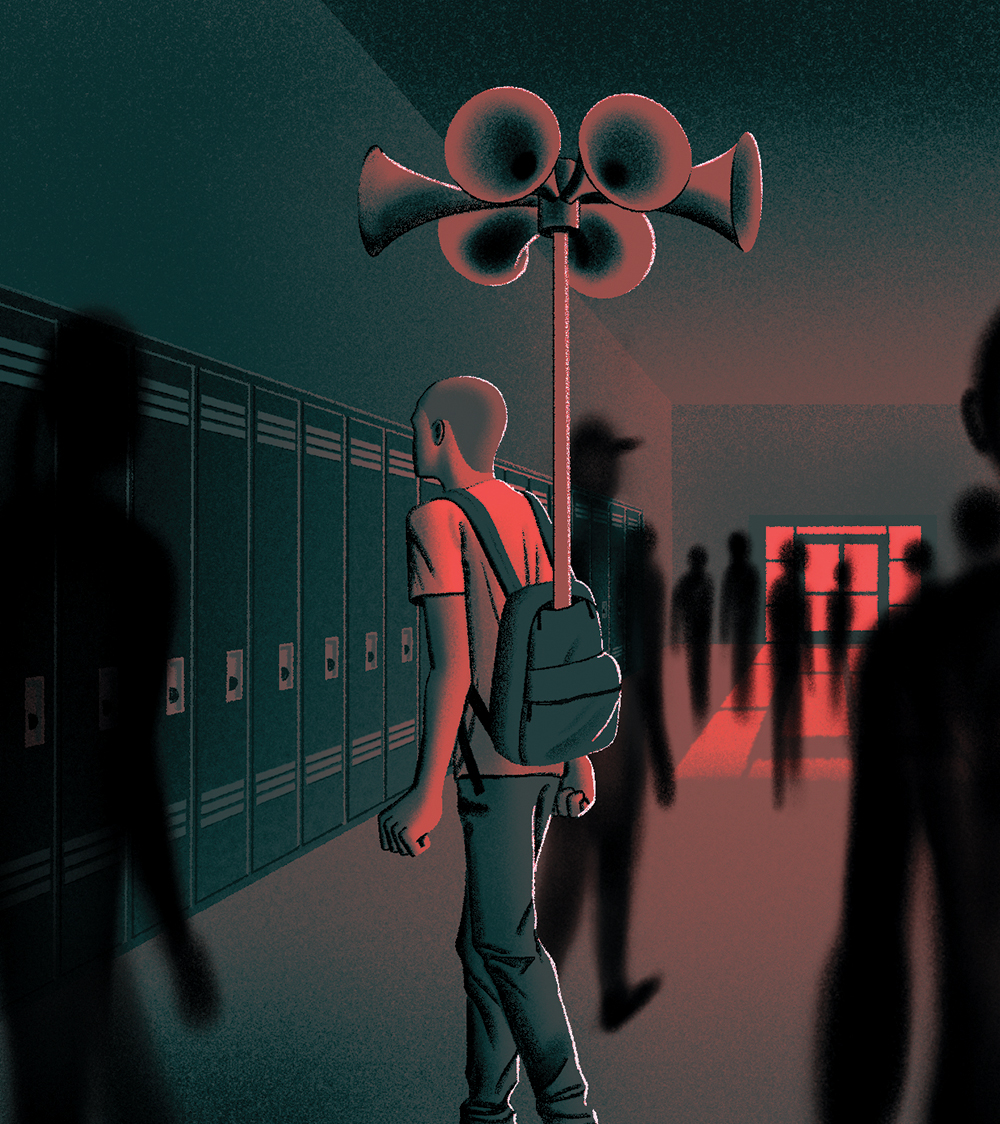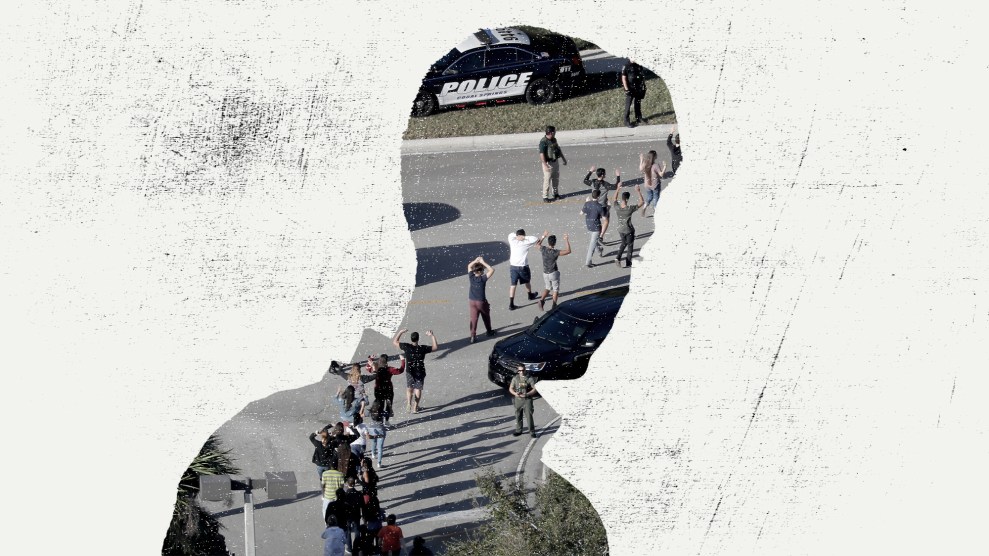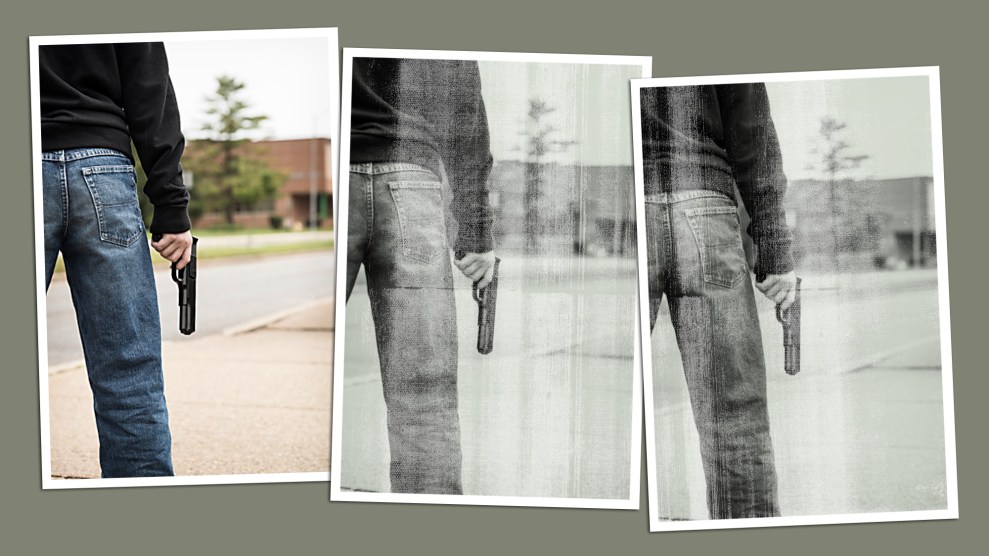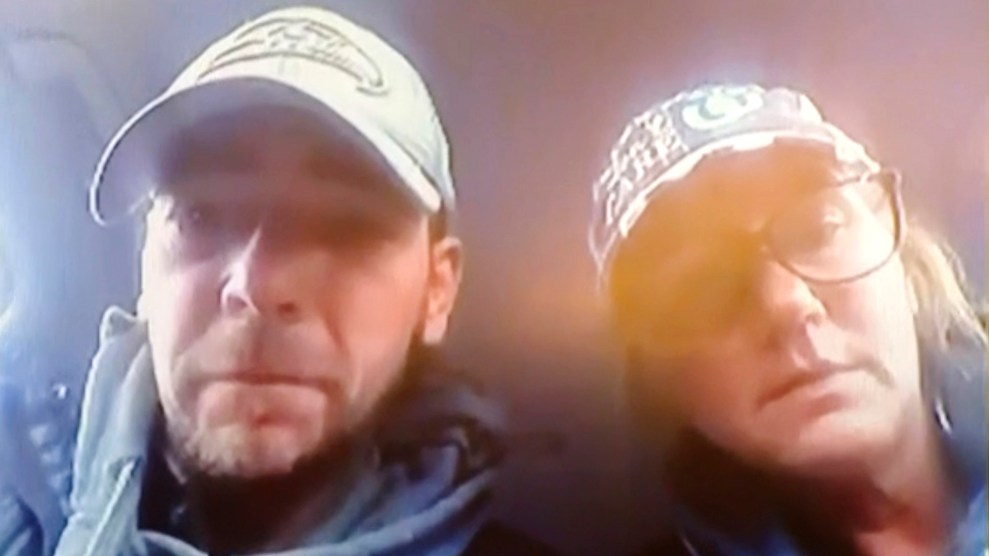This article is adapted from Mark Follman’s new book, Trigger Points: Inside the Mission to Stop Mass Shootings in America (HarperCollins).
When a 15-year-old sophomore opened fire at Oxford High School last fall, terrified students and teachers fled for safety or barricaded classroom doors. Within three minutes of arriving at the building, police apprehended the shooter, but not before four students had been fatally shot: Madisyn Baldwin, Tate Myre, Justin Shilling, and Hana St. Juliana. Six other teens and a teacher were wounded. Countless others in Oxford Township, a community of 22,000 just north of Detroit, were traumatized.
Evidence emerged almost immediately that the shooter had been signaling rageful intent to peers and adults around him—warning signs of a bloodbath that could have been avoided. I’ve tracked mass shootings for Mother Jones for the past decade and researched scores of cases for my new book, Trigger Points, which explores behavioral threat assessment, an emerging prevention method whereby mental health and law enforcement experts work together to intervene with people who are planning violence. By treating mental health problems and improving would-be attackers’ educational, employment, or living circumstances, threat assessment teams have prevented dozens of potential shootings at schools and workplaces throughout the country, including a variety I learned about from leaders in the field and confidential case files.
Threat assessment programs are now mandatory for schools in a handful of states and the method is used at Fortune 500 companies and by the FBI. The Secret Service, which helped pioneer its techniques three decades ago, offers trainings; last year 26,000 people took part. Still, the method remains underused. It requires investment in specialized skills and cultivating public engagement. Instead, most communities continue to prioritize reactive measures like fortifying buildings, arming staff, and conducting active shooter drills. While those could, hopefully, minimize loss of life in an attack, they won’t stop one from happening. What the Oxford tragedy vividly illustrates is the need to focus on active shooter prevention, using knowledge of the behaviors and circumstances that precede virtually all of these rampages.
When prosecutor Karen McDonald announced murder and terrorism charges, she cited “a mountain of digital evidence” showing premeditation and planning by accused shooter Ethan Crumbley, who has pleaded not guilty and is expected to bring an insanity defense. The evidence includes an Instagram post where he boasted about the Sig Sauer pistol he used, and a drawing discovered by a teacher the morning of the attack in which the teen depicted a shooting and wrote, “My life is useless,” “Blood everywhere,” and “The thoughts won’t stop. Help me.”
These were textbook warning signs of both a youth in despair and an escalating plan for violence, according to Marisa Randazzo, a former chief research psychologist for the Secret Service who contributed to a landmark study of school shooters after Columbine in 1999. “We know and can help a student who is struggling like this,” she told me. “This is particularly heartbreaking, because this is a case where a trained threat assessment team would be able to do a lot.”
Case research holds myriad examples of shooters who communicated violent intent—and ambivalence about killing or dying—as they prepared for what is frequently an act of murder-suicide. The danger is often detectable through what the field calls “leakage,” hints in the form of threatening comments, boasts, or other expressions of anger and despair. Intervention strategies can range from counseling and educational support to temporary hospitalization or longer-term treatment.
I examined various cases inside threat assessment programs in which constructive interventions and close monitoring for deeply troubled individuals led to positive outcomes over the long term. In one case in Salem, Oregon, a high schooler named David, who had been experimenting with explosives and threatened to commit suicide with a gun in front of an ex-girlfriend and other peers at school, improved dramatically after being removed for residential care elsewhere. He eventually finished high school, returned to the community, and started a family and a steady work life. Such success stories exist even in a few particularly challenging cases in which parents or other guardians are less than cooperative with threat assessment teams.
The apparent role of Ethan Crumbley’s parents, James and Jennifer, is particularly stark. They are facing involuntary manslaughter charges for allegedly leaving the gun he used unsecured at home, the culmination of what appeared to be an appalling disregard for their son’s worsening trajectory. Those charges, to which the Crumbleys have pleaded not guilty, are a first in a school shooting—and further underscore why a threat assessment team could have been key to thwarting the attack.
According to court documents, James Crumbley purchased the gun four days prior with his son present, and Jennifer Crumbley later took Ethan target shooting, which she highlighted on social media. The day before the mass shooting, a teacher saw Ethan looking up ammunition on his phone, prompting a school official to call Jennifer. She didn’t respond. Instead, she texted with Ethan, who assured her the incident was “completely harmless.”
“Did you at least show them a pic of your new gun?” Jennifer asked. “NO,” he replied, “I only told them I went to the range with you on Saturday.” He added that he’d been trying to identify a bullet cartridge in his room back home.
“LOL, I’m not mad at you,” she responded. “You have to learn not to get caught.”
The following morning, in response to Ethan’s drawing, two counselors met with the Crumbley family at the school and urged the parents to remove Ethan immediately and send him to counseling. The Crumbleys refused to take him home, and Ethan was allowed to return to class. The school vowed to contact child services if the parents didn’t get him help within 48 hours. Later that day, he went into a bathroom with his backpack and came out shooting. As he sat in jail, his parents left town, then failed to show up for their own arraignments. They were soon captured in Detroit.
The Oxford Community Schools superintendent at the time, Tim Throne, stated in a public letter that during the meeting the morning of the shooting, the counselors had asked “specific probing questions regarding the potential for self-harm or harm to others.” Ethan’s answers had indicated none and were “affirmed by his parents,” Throne wrote. The parents “never advised” that Ethan had “direct access to a firearm.”
There is no indication, however, that the counselors asked whether Ethan had access to weapons or sought to search his possessions. Those should have been urgent priorities, according to Randazzo and other experts familiar with the case. (The district’s lawyer did not respond to requests for comment.)
A threat assessment team would have probed beyond Ethan’s explanation that the violent drawing was for a video game design; trained staff would have kept him under tight supervision and quickly gathered further information from others around him. They also would have examined his online activity—which had stirred anxiety among students, leading some to skip school the day of the attack. In the days before the shooting, Ethan didn’t just celebrate his new pistol; in another post, he referred to destruction and death, concluding with, “See you tomorrow, Oxford.” Throne later acknowledged district officials were “unaware of the perpetrator’s social media presence” before the shooting.
The behaviors that worried school staff, meanwhile, “were never elevated to the principal or assistant principal’s office,” Throne wrote. Research on mass shootings shows just how catastrophic a lack of information-sharing can be. After the 2007 Virginia Tech massacre that left 32 dead, the state investigated the perpetrator’s history of disturbing behavior, which had alarmed students, faculty, and campus police. No authorities had all the information, the report found. As a threat assessment adage puts it, “You can’t connect the dots if you don’t collect the dots.”
Court evidence reveals a longer trail of warning signs preceding Crumbley’s attack. Over a period of months, he had recorded videos of himself torturing animals and left a severed bird head in a school bathroom. He researched school shootings online and recorded himself talking about his desire to become notorious like the Parkland shooter—emulation and fame-seeking behavior that marks many cases. His personal circumstances deteriorated: A close friend moved away, the family dog died, and he complained about hearing voices to his mom. A school counselor came to fear he was suicidal.
Three months before he struck, according to a detective on the case, Crumbley texted a peer: “Now it’s time to shoot up the school.” He implied he was joking—and sent a video of a gun in his hand: “My dad left it out, so I thought, ‘Well, why not.’” During the massacre, one student recorded a social media video while hiding in a barricaded classroom that appeared to allude to existing fears, explaining that the shooter was “living up to his word.”
But no one had spoken up. This “bystander” problem is common in school shootings. Kids often believe a troubled classmate isn’t making threats seriously, or they may fear reaching out to authorities or not know where to turn. In one early such case that occurred in Alaska in 1997, a whole crowd of students had indications of what was coming, including rumors about a hit list. By the morning of the shooting, upward of two dozen teens had gathered to watch from a mezzanine inside the high school, in anticipation of something big happening. One girl in the crowd said to another: “You’re not supposed to be up here. You’re on the list.” A student and the school principal were killed in the shooting, and two other students were wounded. Investigation of the attack revealed that no one had spoken out to an authority figure.
Beginning after Columbine, research in the field further confirmed numerous cases featuring this troubling pattern. The leading threat assessment programs I’ve studied emphasize building a culture of awareness and prioritizing connections between youth and trusted authority figures.
Some of these building blocks were already in place at Oxford High. Back in 2017, the school launched an innovative suicide-prevention campaign. Among the students and staff behind it, highlighted nationally on ABC News, was Pam Fine, the school official whose call was ignored by Ethan’s mother the day before the shooting.
In January, the Oxford school board discussed conducting a review to investigate systemic failures and “see if we can communicate better, to find kids, help them sooner,” as the board president put it. “This needs to be the model of what public schools in America use,” said another board member, adding, “We’re not here to put a band-aid on this. We’re here to stop it… whatever that finding is.”
The good news is, a model has already come—and with its effective use, chances are better the next mass shooting won’t.







